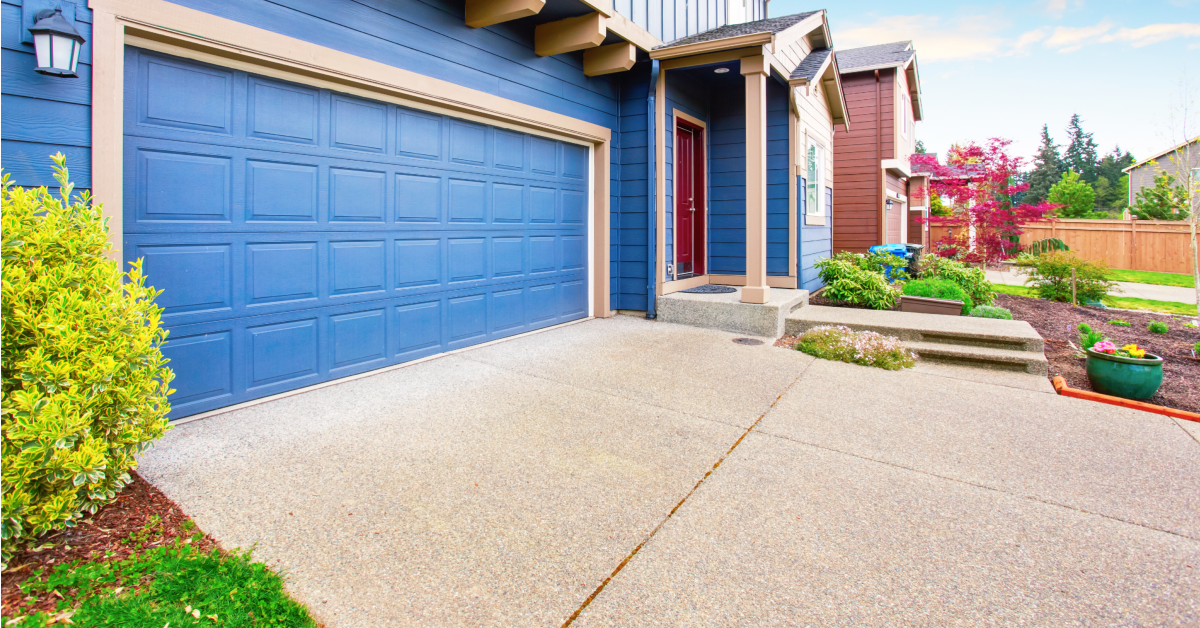A brand-new concrete driveway can feel like the unsung hero of curb appeal. It’s not flashy like a new roof or a flashy paint job, but it sets the tone. Crisp edges, smooth texture, and that cool, industrial vibe—it’s like your house put on a sharp suit.
But let’s be real: concrete may be tough, but it’s not invincible. Without proper maintenance, even the best-laid slab can start to crack, crumble, or stain faster than you can say “jackhammer.”
Here’s how to take care of your concrete driveway so it stays looking new—and strong—for years to come.
1. Give It Time to Cure (And Stay Off It!)
Fresh concrete needs time to cure—at least 7 days before walking and 28 days before parking your car on it. It may look solid early on, but resist the urge to treat it like a finished product too soon. Even the most skilled concrete contractor will tell you: early foot or vehicle traffic is a surefire way to cause premature surface wear.
2. Seal the Deal
One of the easiest ways to extend the life of your driveway is to apply a high-quality concrete sealer. A good sealer acts like sunscreen for your slab—it protects against water penetration, stains, freeze-thaw damage, and even those dreaded oil leaks. Experts recommend resealing every 2–3 years, or sooner if you notice water isn’t beading on the surface anymore.
3. Keep It Clean
Leaves, dirt, and oil stains don’t just make your driveway look bad—they can also break down the surface over time. Sweep regularly, especially in the fall, and wash with a mild detergent and a broom or pressure washer as needed. Pro tip: avoid harsh chemicals, as they can erode the concrete surface.
Need to deal with a stubborn spot? If you’re wondering how to remove oil stains from a concrete driveway, absorbents like kitty litter followed by degreasers can often do the trick. For deep stains, you might need to call in the pros.
4. Skip the Salt in Winter
De-icing chemicals, especially those containing ammonium sulfate or ammonium nitrate, can rapidly deteriorate concrete. Instead, use sand for traction. It’s driveway-friendly and won’t compromise the integrity of your slab. Think of it as a little spa treatment for your concrete—no harsh exfoliants allowed.
5. Watch for Warning Signs
Cracks, discoloration, and spalling (surface flaking) are all signals that your driveway needs attention. Small cracks can often be filled with a concrete repair caulk, but wider or growing gaps may indicate deeper issues. In such cases, concrete experts agree: it’s time to call in a professional before things go from fixable to full replacement.
For expert evaluation and long-term fixes, BSR Renovations in Tracy, CA, has a reputation for smart, durable solutions. Whether you’re building a concrete patio or protecting a driveway, experienced hands make all the difference.
6. Avoid Heavy Loads at the Edges
The outer edges of your driveway are more vulnerable to cracking and chipping. Try to avoid parking heavy trucks or trailers too close to the sides. If you expect frequent heavy loads, reinforce the edges during the installation phase for extra strength.
Final Thoughts
Maintaining a concrete driveway doesn’t require a contractor’s license or a background in masonry. Just a bit of care, consistency, and common sense can go a long way. Stay on top of sealing, cleanups, and seasonal changes, and your driveway will reward you with decades of solid service—no cracks, no complaints.

